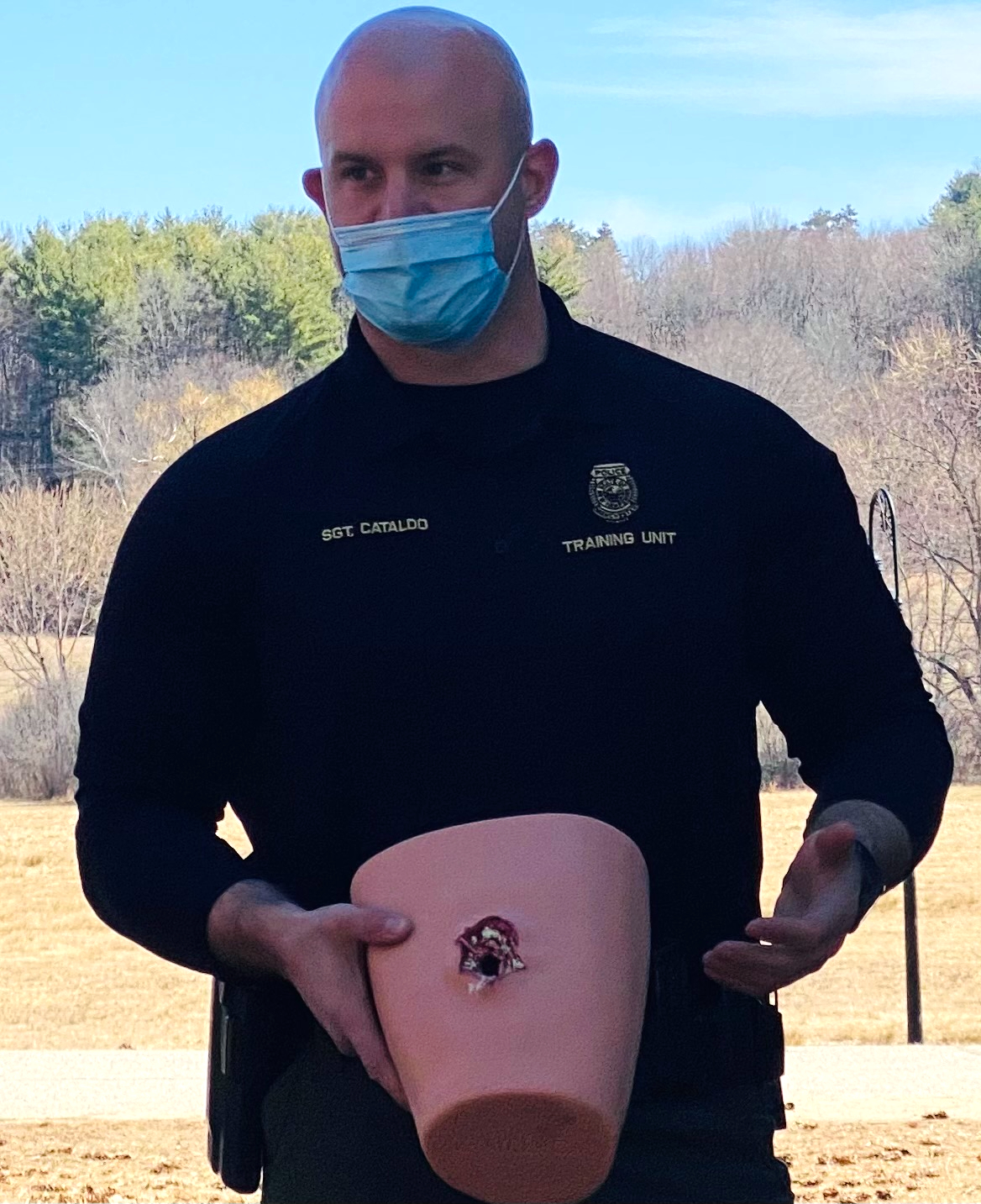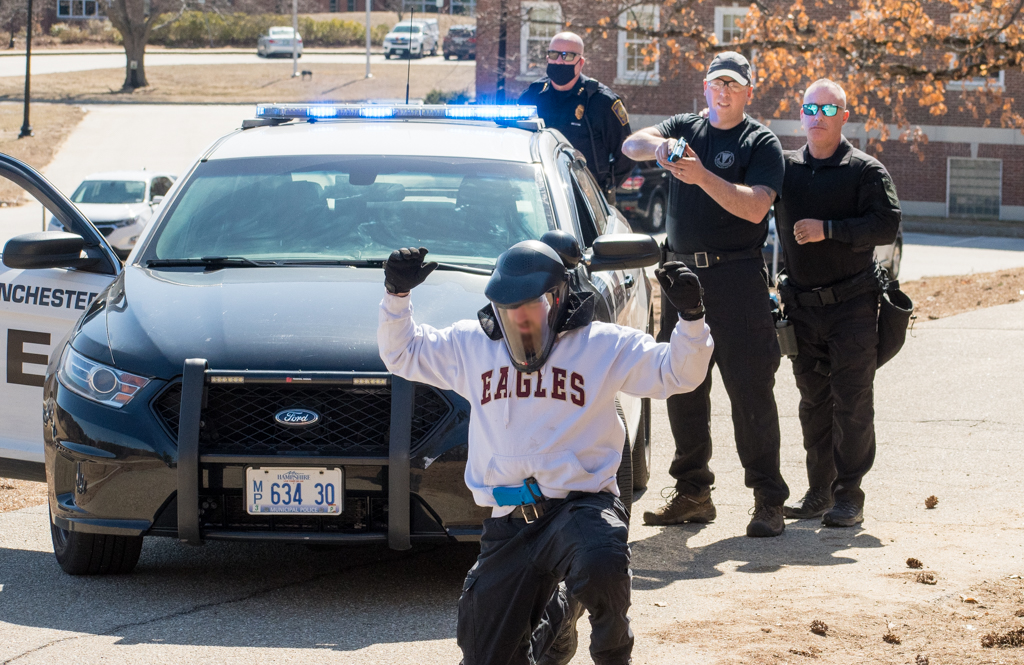
MANCHESTER, NH – Since last month, 35 Manchester police officers have undergone 40 hours of intensive training designed to de-escalate situations, use non-lethal force when possible and make them aware of implicit bias and cultural responsiveness.
The training of officers is done in stages, to limit the disruption to day-to-day operations, but by the end of the year, every officer in the department is expected to have taken the extra training, according to Chief Allen Aldenberg.
Sgt. Derek Cataldo, director of the department’s Training Unit, on Tuesday gave an overview of the training and demonstrated the equipment officers use during an event staged for the media at the John H. Sununu Youth Services Center.
The additional training is the result of the governor’s Commission on Law Enforcement Accountability, Community and Transparency, which was formed after the numerous demonstrations across the country and in New Hampshire regarding the police killing of George Floyd.
The new program focuses on scenario-based training; firearms training including Taser certification; medical; de-escalation; defensive tactics; cultural diversity, and officers’ wellness.
The governor’s commission recommended police departments increase the number of hours of scenario-based training.

On Tuesday, police demonstrated two such scenarios for the media. One involved officers remaining with a cruiser parked a distance away from a mentally distraught man. They call to the man, try to calm him down and get him to drop a knife. Let us get you the help you need, they tell him. He tells them he can’t pay his mortgage and his wife has left him. Eventually, he calms down and the officers take him into custody.
The second scenario involved officers arresting a man wanted for a serious crime in what is known as a “felony stop,” one where the officers draw their weapons. In that scenario, a cruiser, with siren blaring and lights flashing, pulls over a car and, again at a distance, officers order the man out of the car with his hands up. The man complies but he has a gun tucked in his waistband. With two officers pointing their guns at him, the man gets down on the ground where he is disarmed and ultimately taken into custody.
In both cases, the incidents involve a complacent subject and end peacefully. Cataldo said the idea behind the scenarios is to show an officer the proper procedure to follow to ensure the safety of the officer, the public and the suspect.
The training, he said, can’t cover everything an officer will encounter. Oftentimes, in a matter of seconds an incident can change to one that endangers both the officer and others and requires the use of force.
Officers, therefore, are also trained in how to use non-lethal force and defense tactics. The idea, Cataldo said, is to use the least amount of force necessary. Chokeholds and neck pressure are forbidden tactics, he said.

In firearms training, sometimes the officer uses a prop for a gun and other times a real gun but with “simunition” – simulated ammunition — substituted for real ammunition.
Shooting with the fake ammo heightens the experience for the officer while limiting injury. Cataldo said someone struck by simunition would feel a sting and probably suffer a small bruise.
The commission recommended police provide training on implicit bias and cultural responsiveness.
Cataldo said from outside the department provides that instruction.
He said one thing officers learn in that training is what they may view as aggressive conduct means something completely different for someone from another culture.
Cataldo said feedback he has received from the officers on that portion of the training, through anonymous surveys, was mostly positive.
Officers also receive some medical training since oftentimes they are responding to accidents or a shooting. They are familiarized with the patrol car’s medical kit which includes tourniquets and wound packing equipment, among other emergency medical supplies.







